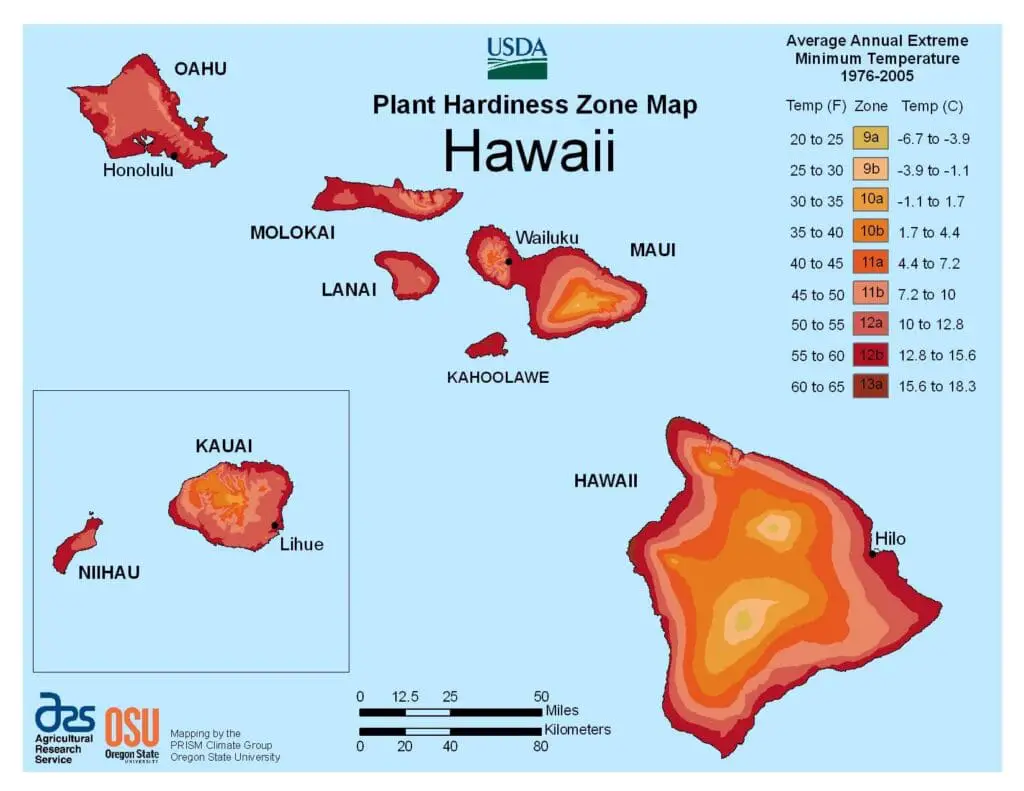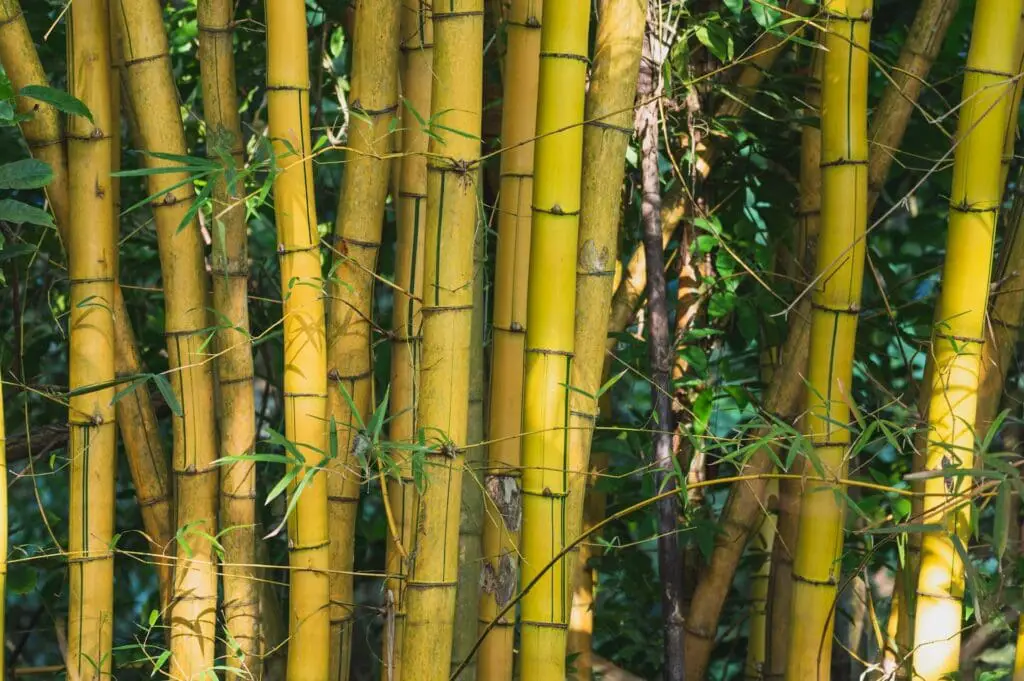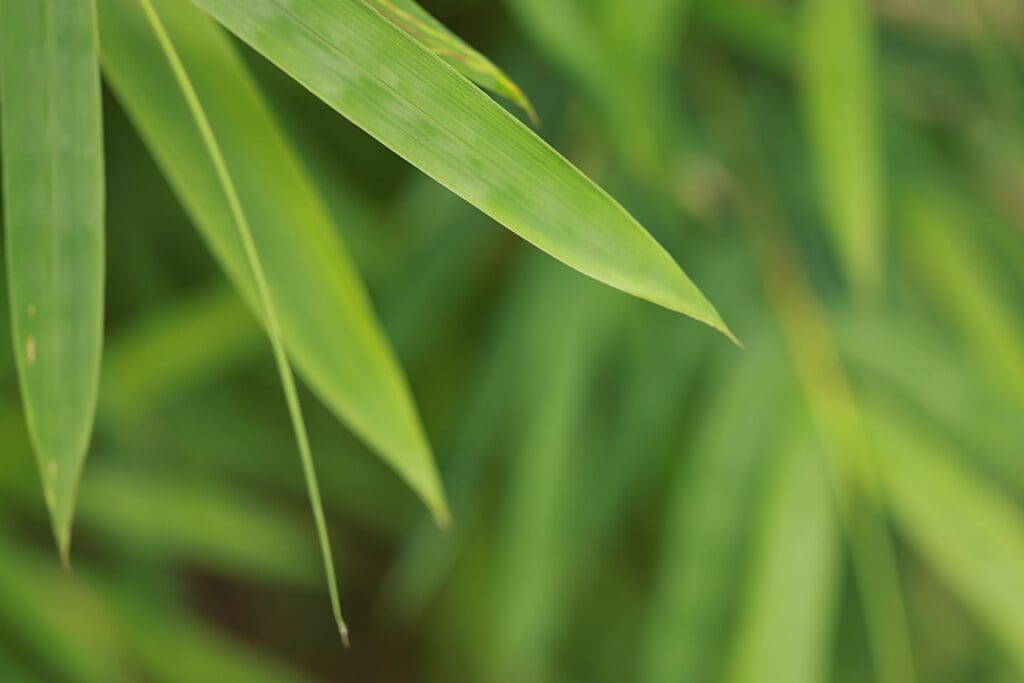Bamboo, although not native to Hawaii, has found a place in the islands’ culture and landscapes. Introduced by Polynesians for practical purposes, bamboo has been utilized in construction, art, tools, and musical instruments. Its popularity for landscaping in Hawaii stems from its diverse sizes, shapes, and colors.
Key Takeaways
- Cows can consume small amounts of bamboo, but it is not recommended as a significant part of their diet.
- Bamboo has high fiber content and can promote digestive health in cows.
- Bamboo should not be the sole source of nutrition for cows and should be part of a balanced diet.
- Feeding cattle bamboo can contribute to weight management and environmental sustainability.
- It is important to consider the potential drawbacks and consult with a veterinarian before incorporating bamboo into a cow’s diet.
Despite these challenges, bamboo offers numerous benefits in Hawaii, such as privacy screens, shade, wind protection, habitat creation, erosion control, soil stabilization, air pollution filtration, and aesthetic appeal. Bamboo can be observed thriving in the wild and in exhibits at various botanical gardens and arboretums throughout Hawaii.
Bamboo in Hawaiian Culture
Bamboo has deeply rooted cultural significance in Hawaii, as it has been utilized by indigenous communities for centuries in various practical, artistic, and culinary applications.
In traditional Hawaiian culture, bamboo played a role in hula dances, where dancers used bamboo implements for rhythmic accompaniment. Additionally, bamboo was used in the creation of traditional Hawaiian crafts, such as baskets, mats, and tools.
The versatility of bamboo allowed for its incorporation into various aspects of daily life, reflecting the resourcefulness and ingenuity of the Hawaiian people. The use of bamboo in these cultural practices highlights its importance as a sustainable and renewable resource that provided both functional and aesthetic value.
Today, bamboo continues to be celebrated in Hawaiian culture, preserving the traditions and heritage of the islands.
Different Species in Hawaii
The diverse array of bamboo species found in Hawaii showcases the wide range of sizes, shapes, and colors that can be seen throughout the islands.
Some of the bamboo species commonly found in Hawaii include Schizostachyum glaucifolium, Bambusa vulgaris, Phyllostachys nigra, Dendrocalamus, Gigantochloa, and Thyrsostachys. Each species has its own unique characteristics and growth patterns.

The history of bamboo in Hawaii can be traced back to the ancient Polynesians who brought bamboo to the islands for practical applications. Today, bamboo in Hawaii has both practical and aesthetic benefits. It is used in construction, tools, art, musical instruments, and landscaping.
Bamboo provides privacy screens, shade, wind protection, and noise reduction. It also helps reduce erosion, stabilize soil, and filter out pollutants from the air.
The rich history and diverse species of bamboo in Hawaii make it a valuable and cherished plant in the islands.
Challenges of Growing Bamboo
One of the primary obstacles faced in cultivating bamboo in Hawaii is the potential impact on local ecosystems due to the plant’s invasive nature. Bamboo has a vigorous growth habit and can quickly spread and outcompete native plant species, leading to a loss of biodiversity.
To address this challenge and control the invasive growth of bamboo, several measures can be taken:
-
Planting bamboo in contained areas or using physical barriers to prevent its spread beyond the intended area.
-
Regular monitoring for pests and diseases, and implementing appropriate pest management strategies to maintain the health of the bamboo plants.
-
Adhering to local regulations and restrictions on the cultivation of certain bamboo species to prevent the introduction of invasive varieties.
-
Conducting thorough research and choosing the right bamboo species that are well-suited to Hawaii’s climate and environment, and have a lower potential for invasiveness.
By implementing these measures, bamboo cultivation in Hawaii can be managed effectively, minimizing the impact on local ecosystems.
Tips for Successful Growth
To ensure successful growth of bamboo in Hawaii, it is crucial to select appropriate species that are well-adapted to the climate and environmental conditions of the region.
When it comes to soil requirements, bamboo thrives in fertile, well-draining soil. It is important to test the soil and make necessary adjustments to ensure optimal conditions for bamboo growth.



Adequate watering techniques are also essential for bamboo health. While bamboo requires regular watering, it can tolerate drought once established. Providing sufficient water during the establishment phase and during dry periods is crucial for promoting healthy growth.
Additionally, mulching around bamboo plants can help retain soil moisture and regulate temperature.
Visiting Bamboo Gardens in Hawaii
It is worth mentioning that visiting bamboo gardens in Hawaii provides a valuable opportunity to observe and learn about different bamboo species in their natural habitat.
Several botanical gardens and arboretums in Hawaii offer bamboo garden tours, allowing visitors to witness the beauty and diversity of these versatile plants. Additionally, some of these gardens organize bamboo cultivation workshops, where enthusiasts can acquire knowledge and skills necessary for successful bamboo cultivation in Hawaii’s unique climate and environment.
These workshops provide hands-on experience and expert guidance, enabling participants to understand the specific requirements of bamboo and learn effective cultivation techniques. By participating in these tours and workshops, individuals can gain insights into the various uses and cultural significance of bamboo in Hawaiian history, as well as acquire practical knowledge to incorporate bamboo into their own landscapes.
Where to Find Bamboo in Hawaii
Hawaii’s diverse landscapes offer numerous locations where bamboo can be found thriving in its natural habitat. Bamboo cultivation techniques have allowed this versatile plant to flourish in various regions of the state. When looking for bamboo in Hawaii, there are several places to explore.
The National Tropical Botanical Gardens of Allerton and Waimea Arboretum showcase a wide variety of bamboo species and provide valuable insight into their cultivation.
Haleakala National Park boasts the largest bamboo forest in the 50 states, offering a unique opportunity to witness the beauty and resilience of these plants.
Additionally, bamboo nurseries like Quindembo Bamboo Nursery and Whispering Winds Bamboo offer a diverse selection of clumping and tropical bamboo varieties for those interested in incorporating this plant into their own landscapes.
Frequently Asked Questions
Q: Does bamboo grow in Hawaii?
A: Yes, bamboo can grow in Hawaii.
Q: What is bamboo?
A: Bamboo is a type of plant that belongs to the grass family.
Q: Are there different varieties of bamboo?
A: Yes, there are various varieties of bamboo, both tropical and non-invasive.
Q: Is bamboo an ornamental plant?
A: Yes, bamboo is often used as an ornamental plant.
Q: Can bamboo provide privacy?
A: Yes, bamboo can be used to create privacy screens.
Q: Can bamboo grow on the Hawaiian Islands?
A: Yes, bamboo can grow on the Hawaiian Islands, such as Oahu and Maui.
Q: How tall does bamboo grow?
A: Bamboo can grow to various heights depending on the variety, with some reaching over 100 feet.
Q: How thick does bamboo grow?
A: Bamboo can grow to various diameters, with some varieties growing up to several inches thick.
Q: Is bamboo a viable crop in Hawaii?
A: Yes, bamboo can be grown as a viable crop in Hawaii, with various uses including timber, furniture, and flooring.
Q: What is the best soil and climate for bamboo?
A: Bamboo thrives in tropical climates with rich soil and adequate moisture.
Conclusion
In conclusion, bamboo does grow in Hawaii, although it is not native to the islands. Polynesians introduced bamboo to Hawaii for its practical uses, and it has since been utilized in construction, tools, art, and musical instruments.
Growing bamboo in Hawaii poses challenges due to its invasive nature and potential impact on local ecosystems. However, by carefully selecting suitable species, practicing proper care and management, and adhering to local regulations, bamboo can thrive in Hawaii’s climate and environment.
The benefits of bamboo in Hawaii are numerous, ranging from privacy screens and erosion control to aesthetic appeal and air pollution filtration. Visitors can explore thriving bamboo exhibits at various botanical gardens and arboretums in Hawaii.

